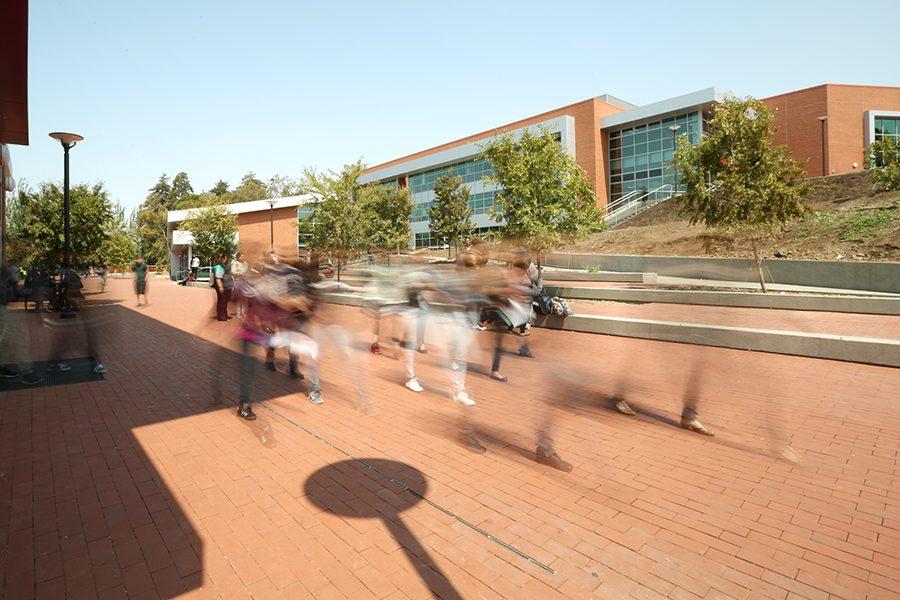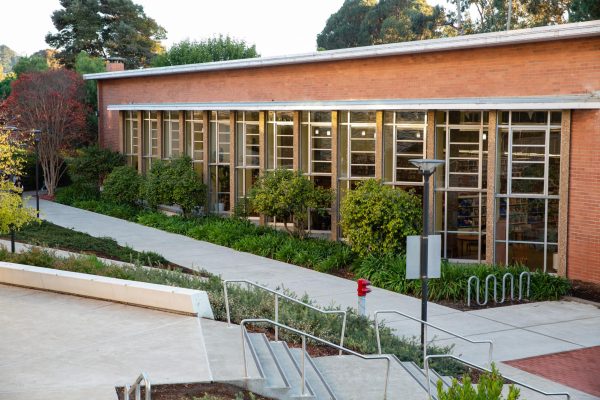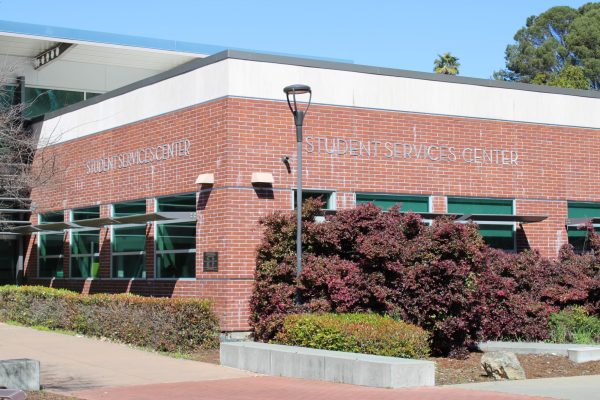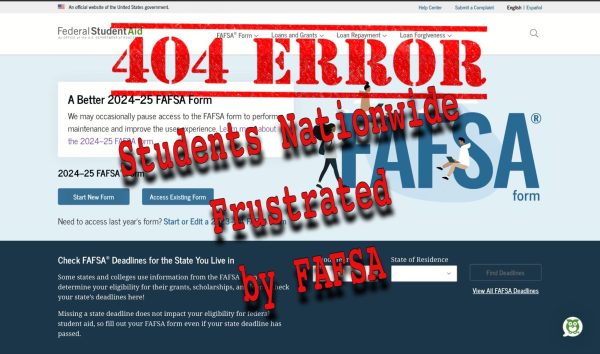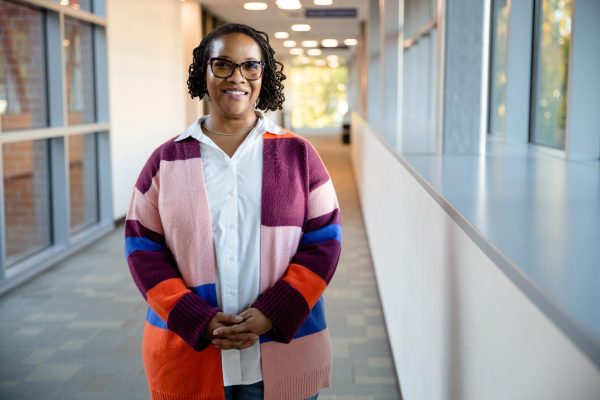Enrollment slowly rises
Number of students enrolled increases during first two weeks of semester despite 4.2 percent drop since last year
Students walk through the Campus Center Plaza between the Student and Administration Building and the General Education Building near Fireside Hall on Monday. Despite completion of the Campus Center and Classroom Project, enrollment is down by 4.2 percent according to the Admission and Records fall 2016 report.
August 26, 2016
Contra Costa College’s fall 2016 enrollment is rising slowly as a team of college officials work together to increase the institution’s enrollment numbers.
Although the total student headcount is stable when compared to last fall, as of the first day of classes on Aug. 12, the number of Full-Time Equivalent Students (FTES) has dropped by 4.2 percent from fall 2015, Admissions and Records Director Catherine Frost said.
Director of Business Services Mariles Magalong said, “The drop of about 89 FTES roughly translates to just over $400,000.”
College President Mojdeh Mehdizadeh said the college receives about $5,000 per FTES.
But as of the Aug. 17 Enrollment Report, the FTES number was down by 99 when compared to that date for fall 2015.
Mehdizadeh said this academic year’s goal, which includes the fall, spring and summer terms, is to reach 5,581 FTES.
According to the Admissions and Records fall 2016 Enrollment Report, as of Aug. 17, 2,252 FTES have enrolled at CCC, falling slightly under half of the year’s enrollment goal. At the start of fall 2015 semester the number of FTES was 2,351.
Mehdizadeh said it is still too early in the semester to determine whether the college goal is met.
Magalong said an enrollment drop results in decreased revenues (for a California community college) and enrollment increase results in increase revenues.
At the start of fall 2015 semester total student headcount was 6,377. And at the start of fall 2016 semester headcount was 6,375.
Headcount decreased by only two students from fall 2015-16, according to the CCC’s Admissions and Records’ fall 2016 Enrollment Report.
California community colleges receive funding from the state by the number of Full-Time Equivalent Students who enroll. An FTES is one student taking 15 units total or multiple students taking units that add up to 15 units.
Dean of Enrollment Services Dennis Franco said, “Enrollment has been soft. We are lower than we’d like to be. We are on stability (funding) this year, meaning, the state gives you a year to maintain your current level of funding.”
Each college has an annual enrollment goal to meet, which CCC has strived to meet for the past couple of years, but has fallen short.
Franco said the goal is to “build” enrollment for the semester to get off of stability within the next year.
The state allows a year for a college to stabilize itself financially.
Business Services Supervisor Nick Dimitri said there is a limited amount of money set aside for each college based on its FTES goal.
If the FTES goal is surpassed, the community college does not receive extra funding from the state.
Franco said, “If we (exceed) that cap it means for each of those students we don’t receive any funding.
“But it’s a good problem to have because it means you are hitting your target and essentially you are fully funded,” he said.
Frost said, “Students taking fewer units is not uncommon for our community. Students have other obligations, like work and taking care of their families, so they can’t take as many units.”
Dimitri said, “When the economy is doing well enrollment goes down, but when it is doing poorly enrollment goes up.”
Dean of Students Services Vicki Ferguson said a main focus of enrollment management is to work on student retention. The money received from FTES is used for faculty and staff salaries, benefits, college budgets and other typical campus operations.
She said the new General Education Building, Fireside Hall and the Student and Administration Building were funded by Measure A bond funds.
Mehdizadeh said, “For the past three to four years during construction students have not had a place to congregate. But we are back to being a fully open campus.”
Franco said it is important for everyone to connect and work together to increase enrollment. With help from counseling, Disabled Students Programs and Services, EOPS and a series of campaigns funded by the college Foundation, fall 2016 numbers have already begun to increase.
“We recently did an email campaign for three consecutive weeks where we were emailing students who had applied (to the college) but hadn’t registered,” Franco said.
The emails were used to “build” enrollment for fall semester and semesters to come.
A second campaign was for students who had (completed) over 40 units and had completed their transfer level English and transfer level math requirements but hadn’t registered yet for fall, Franco said.
“It was designed to say, ‘Hey, you’ve done all of this work, why don’t you come back and finish up your degree, finish up and transfer?’”
Franco said this campaign was really encouraging those students who aren’t currently enrolled to come and finish what they started.
“So there was really a positive spin.”
The CCC Foundation funded the third enrollment campaign, the “Next One’s On Us.”
Franco said, “Studies show that if students are enrolled full time they are more likely to be successful, and we wanted people to know and encourage them to come (to the college).
“With funding from the CCC Foundation, some very generous funding, we were able to extend an opportunity for (700) students who were enrolled in 6 to 11½ units to take one additional class free of charge, along with the first 100 getting all books free of charge as well.”
Students had to register in early August through Aug. 11 (the day before fall classes began) in the Welcome/Transfer Center to take advantage of the “Next One’s On Us” campaign.
“As a team, we are trying hard to maintain enrollment,” he said. “As much of our enrollment is soft, there is this team of people who are really trying hard, bringing in students, and that we make them successful.”
Franco said faculty members are contributing to increasing enrollment by taking more students, even above the class ceiling, into their classes as well.
He said increasing enrollment means more than just increasing funding. It is about recognizing the student success component. He recognizes that students have a lot going on. Increasing enrollment is a priority, but making sure students continue going to classes is their main focus.
Ferguson said she wants campus groups and organizations, like the Associated Students Union, to be part of reaching out to students.


